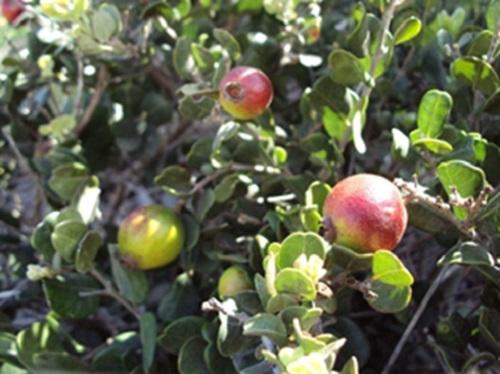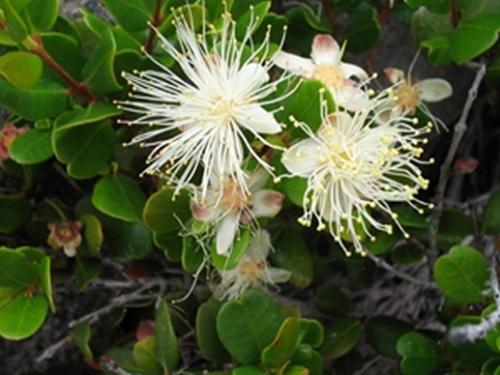Andrea P. Loayza
Other projects
12 Jul 2007
Closing the Seed Dispersal Loop for Guettarda viburnoides in a Neotropical Savanna – Connecting Patterns of Avian Seed Dispersal with Population Growth in a Naturally Fragmented Landscape in Bolivia
The aim of the project is to examine the recruitment dynamics of Myrcianthes coquimbensis; an endemic and globally endangered plant of the Atacama Desert ecosystem of Northern Chile.

Fruits of M. coquimbensis.
Myrcianthes coquimbensis is a globally endangered shrub, endemic to the Elqui Province in Chile. It has an extremely narrow distribution, occupying an area of 84 Km2 along the coast. This species is highly threatened for several reasons, among which the most important is habitat loss; most of its habitat is being destroyed to accommodate a variety of development projects. Additionally, droughts lead to high levels of flower mortality, and thus most plants do not produce fruit. Finally, a high percentage of the fruits that are produced, are lost to pre- and post-dispersal predation, as well as consumption by goats, which are farmed extensively in the area. To be able to predict the trajectories populations of M. coquimbesis face in the near future and design a relevant conservation strategy, it is key to understand the recruitment dynamics of this species, and how different processes influence these dynamics. Thus, this study is designed to assess the population dynamics M. coquimbesis and propose a sound conservation strategy for this species by considering data on quantitative aspects of its ecology and incorporating it into population projection matrices.

Flowers of M. coquimbensis.
This study will be conducted in the remnant populations M. coquimbesis in the Coastal Desert ecosystem near the town of La Serena (Chile). Specifically, we will gather data on:
1) breeding system,
2) major sources of seed loss,
3) seedling emergence thresholds,
4) demography of this species. Through a designed set of experiments, we will be able to determine if the lack of recruitment is due to low fruit production because of pollen limitation, high rates of fruit loss, low germination and establishment probabilities; all of these factors can affect the reproductive output of M. coquimbesis each year.
The importance of this study is for conservation is three-fold. First, this study will generate information on the basic ecology of M. coquimbesis, a threatened endemic of the Atacama Desert. This information is key to understand why there are almost no recruits across its area of distribution. Secondly, this study will examine the population dynamics of this species and, by using tools for demographic analyses we will be able to determine which plant stages are critical for population growth. Third, this study will make an important contribution to ecological research in the Atacama Desert ecosystem; an ecosystem of which there is little information and that is currently threatened because it is considered prime land for development.